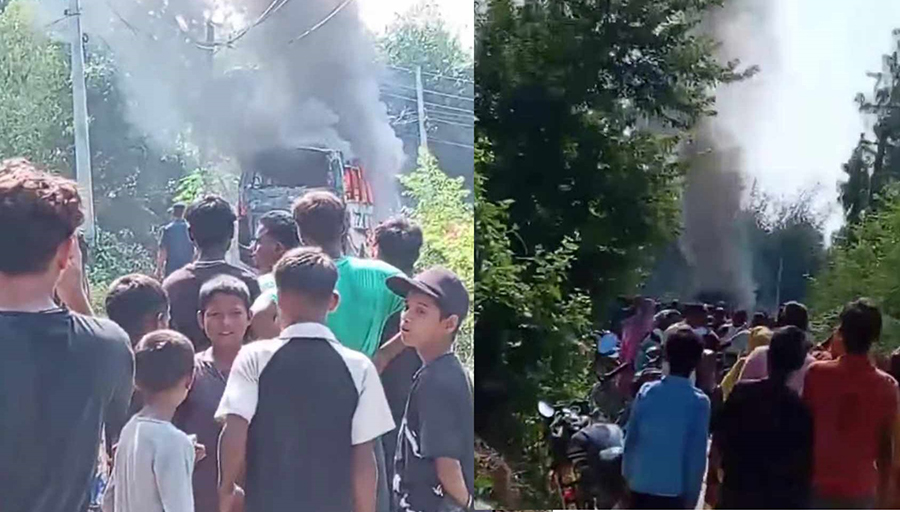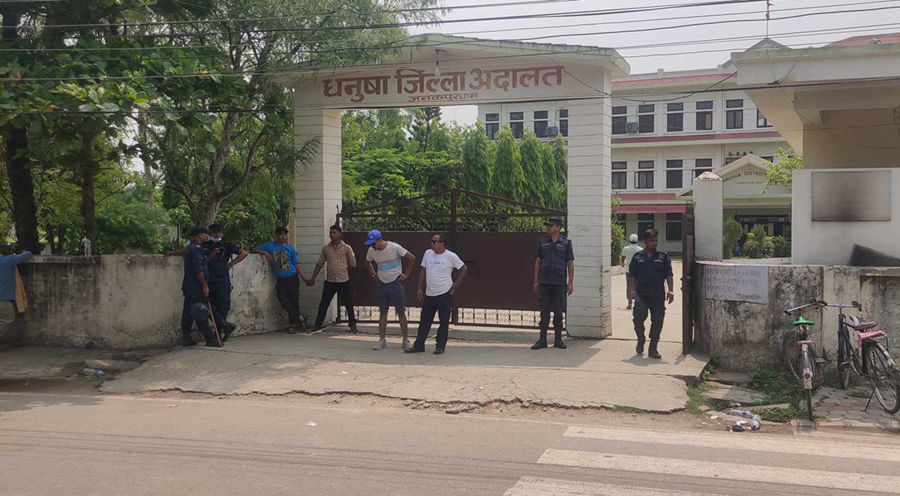
Janakpur Dham, July 2
Remains of the Lichchavi period were found during the excavation of the Matheswarnath temple in Dhanusha
18 June, Janakpurdham. Ancient Lichchhavi-era remains dating back to the 8th/9th century have been unearthed during the excavation of the Matheshwarnath Temple in Ward No. 6 of Dhanusha Municipality.
The Department of Archaeology uncovered these artefacts, estimated to be around a hundred years old, during the ongoing excavation of the temple.
During the excavation of the Matheswarnath temple, the remains of the Lichchavi period, which are hundreds of years old, have been found. Led by archaeologist Prakash Darnal, a three-member team from the Department of Archaeology initiated the excavation of the ancient temple’s ruins on June 21.
The excavation has unearthed Lichchhavi-era inscriptions, coins, and other evidence. Archaeologist Darnal estimates that the temple remains could date back to the 8th/9th century, based on the findings of inscriptions in the Lichchhavi style, indicating the antiquity of the temple.

According to him, so far, an iron dower connecting two stones, a round iron ring, and Indian and Nepali coins have been found on the surface above the temple. Looking at the letters ‘Mana’ written on the stone, it looks like the Lichchha period.
“We have found stone inscriptions with the ‘mana’ letters, typical of the Lichchhavi style. This is a significant discovery that can help establish the ancient history of the temple,” explained Darnal.
The excavation is ongoing, with further discoveries anticipated. According to the locals, it was called Kusheshwarnath temple. According to local 75-year-old Shant Bindeshwar Yadav, four decades ago, Hem Bahadur Malla’s brother Jhopel Malla had vandalised and excavated part of the dilapidated temple to find treasure.
Shobit Rabidas, a local, said that the stones of the vandalised temple were also taken away by the people of nearby villages. According to Rabidas, there was a Shivlinga of Matheswarnath there, which is kept in Gobindpur.
According to Rabidas, Satoshar Temple was built two kilometres away by taking soil from here, which is a stopover point in the 170-day Mithila cycle. Excavation has been started from the western entrance of the temple. The upper part of the ruins is covered with cement and very old bricks. In the lower part, the stones are ‘interlocked’ with each other.

Archaeologist Darnal stated that the excavation has found geometric patterns not previously seen, suggesting the possibility of discovering Mithila’s ancient civilisation.
Mayor Kariram Yadav said that the collection will also be taken from those who vandalised the structure of Matheshwar Mahadev. “Stone bricks have been taken from here to various villages. Now we will collect them by notifying from the municipality. And we have a plan to build a new temple here while promoting the preservation of this relic,” said Mayor Yadav.
According to Yadav, a budget of Rs 1.5 million has been allocated in the current fiscal year. He said, “At the request of the locals, the excavation was initiated in collaboration with the archeology department.” It is mentioned in the Mithila Mahatmaya that there were four recessions during the Ramayana period. In which King Janaka of Mithila built four temples around his palace.
Among them, Jaleswarnath in Jaleswar, Khsireswarnath in Dhanusha, and Kalyaneswarnath in Kalna, India are mentioned in the Mithila Mahatmaya. In which one Matheswarnath temple is extinct. It is assumed that this temple could be the one.

























